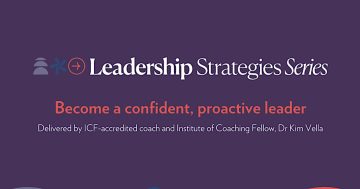
Dr Julie Smith’s Mothers’ Milk Tool estimates Australian breastfeeding is worth $5.5 billion each year. Photo: iStock.
Dr Julie Smith has always been annoyed by a common question asked of mothers on maternity leave: what do you do all day?
“If you’re breastfeeding, you produce 200 litres of milk in the first six months for your baby; this is why you’re always tired,” she said.
“You’re making at least one litre of milk per day; that’s worth at least $100, so that’s what you’re doing.”
The ANU honorary associate professor has helped develop a tool to tally the volume and monetary value of breastmilk to make it more visible to policymakers.
“Regardless of how you’re feeding your child, caring adds a full working week of hours plus the added sense of responsibility,” Dr Smith said.
“This just considers the milk itself, but breastfeeding gives more than milk; it’s the cuddles, the eye contact, the mouth movements and muscle development.”
Dr Smith used the price of fresh donor milk in Norway to give the produce a per litre value. The not-for-profit price is $100 US.
Australian mothers produce about 55 million litres of breastmilk each year, based on the births of about 300,000 children. This makes the ‘breastmilk economy’ worth more than $5.5 billion a year.
Dr Smith put it simply: “it’s a lot of milk!”
“We also calculated how much milk is lost in each country. Ireland loses about 80 per cent, while Australia loses about two-thirds of its potential breastmilk,” she said.
“This is because of a lack of support, lack of education, lack of funding and how people feel about feeding in public.
“If any other industry were giving this kind of outcome, you’d give it a lot more money.”
Dr Smith hoped by showing how much women added to the food system, economy and society through caring for children, the value of breastfeeding would become more recognised and that policymakers would provide funding to make it easier for all mothers to access.
“It takes skill, knowledge and support to do this. If women don’t get the chance to see feeding in society, to feel supported, they don’t know how a baby’s supposed to look, its position, what sucking looks like,” she said.
“We want more than statements that mothers ‘should’ breastfeed. We’re calling for better funding and policy to make the entire process easier for mums.”
According to the Australian Breastfeeding Association (ABA), 98 per cent of mothers start breastfeeding but unfortunately many feel they can’t continue this journey.
ABA breastfeeding information and research manager Naomi Hull said this was indicative of women’s desire to breastfeed.
“There are just so many roadblocks in their way; it’s so challenging for mums to learn how to breastfeed who are also trying to adjust after giving birth. It’s not something that always comes naturally,” she said.
“Given the impact it can have on the long term health of both mothers and babies, which saves millions in health costs, we need more focused, independent education and training so health professionals are better equipped to support mums to breastfeed, and better workplace support as well.”
Ms Hull said she, too, hoped this tool would raise awareness of the value of breastmilk so that policymakers would include more money for breastfeeding support in the community.
“We know that mothers are not reaching their breastfeeding goals and that there are huge gaps in structural supports in Australia,” she said.
“We have the ABA Strategic Plan 2020-2022; we’re still waiting to see that funded and implemented. We’ve seen nothing done at this stage.
Women can also add their own breastfeeding data to the Mothers’ Milk Tool, which Dr Julie hoped would inspire mothers to advocate for themselves within their own families.
“I hope it invigorates and inspires them,” she said.
“You can look at it and say ‘yes, every drop counts’.”
The Mothers’ Milk Tool was created in partnership with Alive and Thrive and FHI Solutions.












